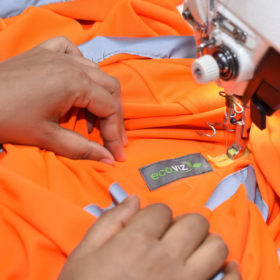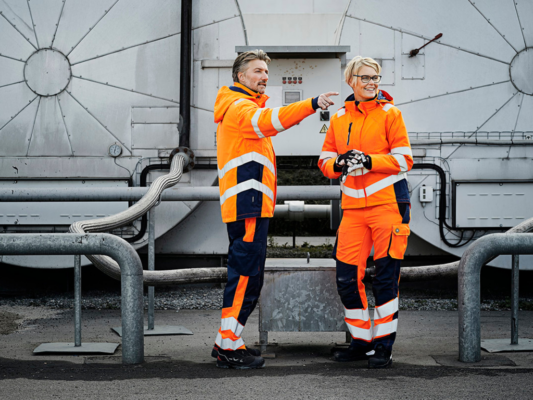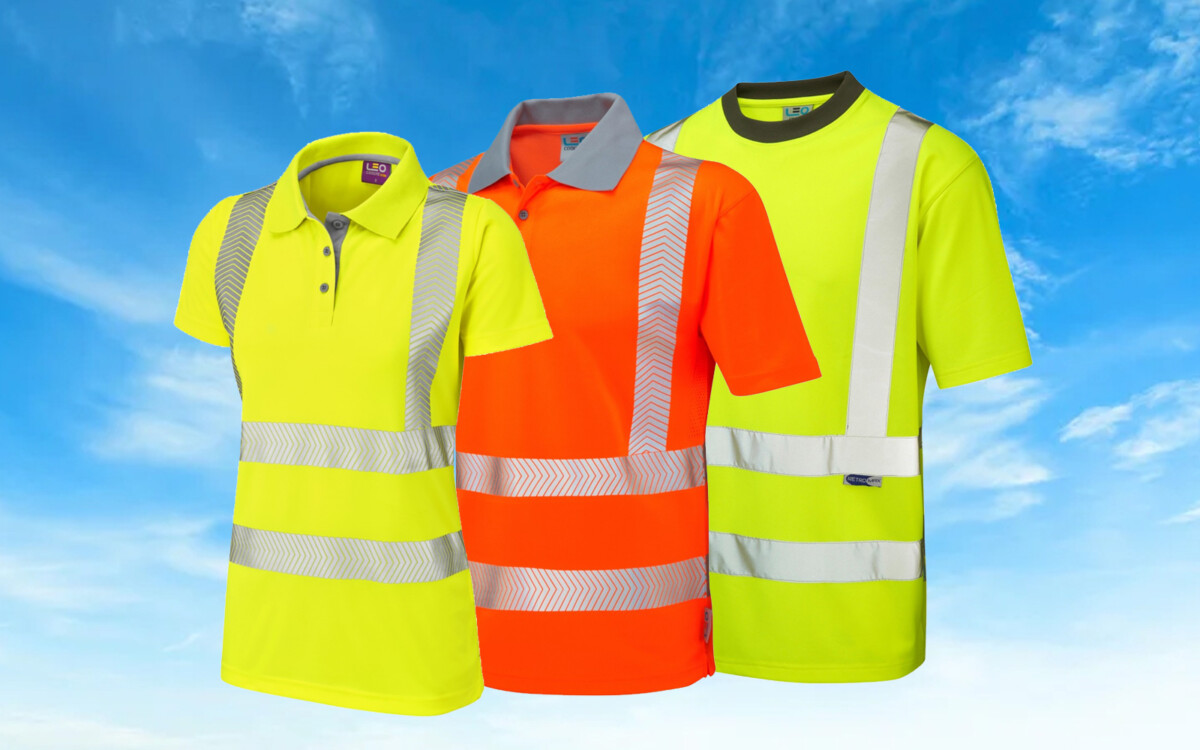No products in the basket.
Health & Safety, High Visibility Clothing, Workwear
Stay Cool & Dry This Summer
Regulating body heat when the temperatures soar can be a significant challenge for employees in climates or work environments where machinery and production processes already produce a significant amount of heat.
At Clad Safety we offer a wide selection of summer workwear and PPE to help combat adverse conditions and keep you cool and dry as the temperatures climb. From moisture-wicking polo shirts and t-shirts to cargo shorts, gilets and jogging trousers, our workwear is designed with comfort in mind. For those requiring protective clothing we stock specialist ranges of hi-vis lightweight over trousers, stretch trousers, shorts and ultra-lightweight footwear using the latest in technical materials to offer superior levels of comfort and protection.
For many individuals heat stress is an issue all year round but it also affects countless more workers over the summer months when either exposed directly to sunlight or working in areas with limited cooling systems.
As the body reacts to heat it increases blood flow to the skin’s surface producing higher quantities of sweat. As the sweat evaporates, the body cools. With traditional clothing the rate of evaporation is restricted particularly when the environment is humid, as sweat becomes trapped in the fabric, leading to a gradual increase in core body temperature. To combat this increase and to try to cool the body, more sweat is produced and so the cycle continues. At best this leads to discomfort, sweat marks, stains and unwelcome body odour but more significantly may cause the more unpleasant effects of heat stress.
Heat stress can affect individuals in a number of ways; some typical symptoms are dehydration, an inability to concentrate, muscle cramps, heat rash, fainting, heat exhaustion (fatigue, nausea, headache, moist skin) or heat stroke (hot, dry skin, convulsions, and eventual loss of consciousness) which if not detected at an early stage can lead to death. As we all feel the effects of heat differently it is therefore imperative that we take the health risks seriously and view all personnel as potentially vulnerable.
So what can be done to keep workers more comfortable in the sweltering heat? The first and most obvious solution is to manage the working environment. Many companies have protocols in place to deal with higher temperatures; these may include varying working hours to allow for earlier start and finish times, improving ventilation and cooling to the work stations and implementing additional breaks.
For some this may be enough but for those out in the field or where conditions cannot be adequately controlled the choice of clothing plays an extremely important role. Workers that are uncomfortable are far more likely to lose focus and make poor decisions putting themselves and others at the risk of harm. The kneejerk reaction for many to try and remain cool is to either unzip jackets, wear half a coverall or remove layers of clothing altogether. The risks and hazards faced however remain exactly the same as any other day so it is essential that protective workwear and PPE stays in place.
Thankfully, with the advancements in technology new lighter fabrics are now available to keep the wearer cooler and more comfortable. Innovative materials can weigh half of what their original counterparts used to; providing complete protection against heat, flame or arc flash without compromising on protection. These garments often have better air permeability too, or feature specialist design characteristics such as mesh panels or side vents to keep the wearer cool.
A further option is to select a moisture-wicking range that has been created specifically for its advanced moisture management properties. Traditionally cotton was always viewed as a material to keep the wearer cool in summer however there is a reason you will never find an athlete in a cotton sports top or pair of shorts. Whilst cotton absorbs sweat well it struggles to release it thereby keeping hold of the moisture for longer.
Moisture-wicking fabric is a modern, technical fabric designed to draw moisture away from the skin using tiny, built-in capillaries. Through the capillary system, moisture is drawn to the exterior of the fabric making it easier for it to evaporate and allowing it to dry more quickly. Through this process the fabric helps to regulate body heat, keeping you warm in winter and cool, dry and comfortable in hot and humid conditions. Unlike cotton, it absorbs very little moisture so helps to combat those unwanted sweat marks, stains and dreaded body odour.
Clad Safety has been operating for over 30 years and takes pride in the excellent service that we offer to our customers. Our product range, combined with expert technical advice allows us to offer valuable workwear solutions.
For further information on the moisture-wicking and lightweight ranges Clad Safety has on offer, please click here.
To find out more about switching to lightweight or moisture-wicking workwear options, please speak to a member of our Customer Service Team on 0800 161 3661 or email [email protected]. In many instances we will be able to offer alternatives to match your current uniform range in both ladies and men’s sizing providing both a colour-matching service and company branding to make the switch simple and straightforward.




